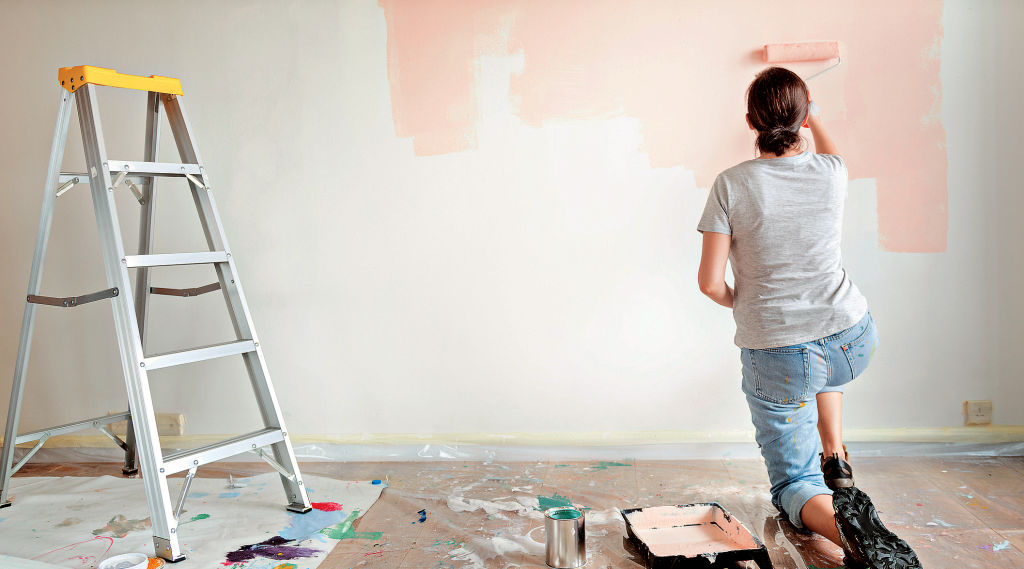Home is not only where the heart is, it’s where everything is now.
And, while we previously considered what impressions the shoes we wore, bags we carried or fragrance we sprayed would make on our colleagues, it’s now what’s creeping into our Zoom frames that’s making those impressions for us.
First coined in the UK in The 2020 Renovation Nation Report by mortgage comparison site money.co.uk, it cited a spike in small home renovations as partly due to the increased time we’ve spent at home, and partly due to “Zoombarrassment”, with 40 per cent of people reporting experiencing the feeling.
In the US, this same trend, has seen interior design firms such as DC-based Residents Understood offer virtual interior-design packages specifically for your Zoom room, where for $440 they’ll take a video tour, do a 30-60 minute consultation and follow up with suggestions for the makeover.

In Australia, the homewares industry is booming, with Temple & Webster editor, Selma Nada Rajah reporting that the types of product sales since remote working, indicate Australians are prioritising mini-decorating projects.
“People have become more aware of the spaces they live in, taking a good hard look to assess functionality and embrace the potential to bring comfort, fun and happiness,” she says. Echoing the UK report, IKEA’s 2020 Life at Home found one in 10 Australians did not feel content and at ease in their homes during lockdown, with 17 per cent feeling our homes aren’t designed in a way we want to live.

Amy Hare, interior designer for IKEA Australia, says easy upgrades were popular.
“It was the year for enhancing our already existing spaces with small-scale solutions,” she says.
While unsurprisingly ergonomic chairs saw more than a 100 per cent increase from 2019, it was key redecorating pieces that also peaked for the Swedish retailer, with sales of the HOVET full-length mirror surging 200 per cent from the year before.
“Mirrors can act as an alternative to artwork and can also make a room feel larger, which is great when multiple activities are happening in one space,” says Hare.

Queensland-based registered psychologist and Pragmatic Thinking co-founder and CEO Alison Hill believes it smart to be proactive about your own potential “Zoombarassment”. “Setting up your work from home space is a great idea as it’s a representation of your individual identity. The most important thing is that it is easy to set up, is functional, and is something you enjoy.”
While Hill notes our inability to switch off physically and mentally from the job is one of the downsides of this crossover between our professional and personal lives, there are also benefits.
“We’ve been invited into a more human connect with each other. We’ve met pets, connected with family members and shared this space with our team members in a way that has not happened previously, crafting greater connections,” she says.
Hill recognises there’s something intimate about live streaming into someone’s home, especially if you catch a glimpse of something unexpected, or “Zoombarrassing”, such as a laundry basket of dirty undies.

“Our homes are closely connected to who we are as individuals. From photos, to quotes, to furniture, to the mementos we have around us; each of these share a story about what is important to us. This can be a great conversation starter for those working from home via Zoom, but it can also lead to some awkward moments.”
Hill says when it comes to communicating effectively and creating easier connections, there are two considerations: what is in the camera view and what can be heard audibly.
So whether you Zoom in front of a colour-coded bookcase, jungle of houseplants or white wall, be measured about what’s in frame.
“It’s key to be deliberate about what’s in the background because it can distract from the conversation if we’re not,” she says.
